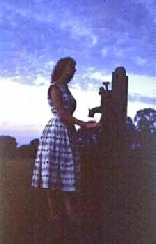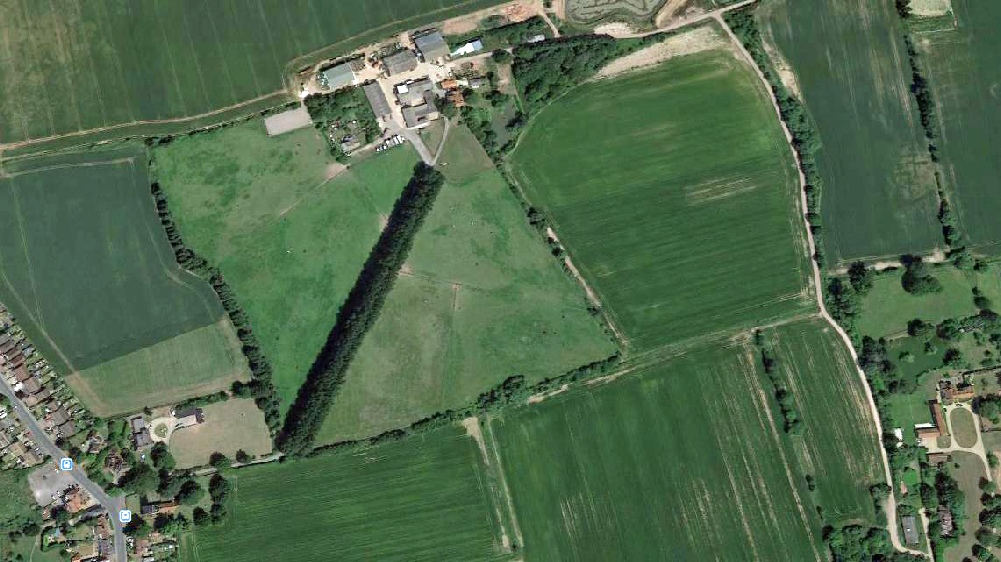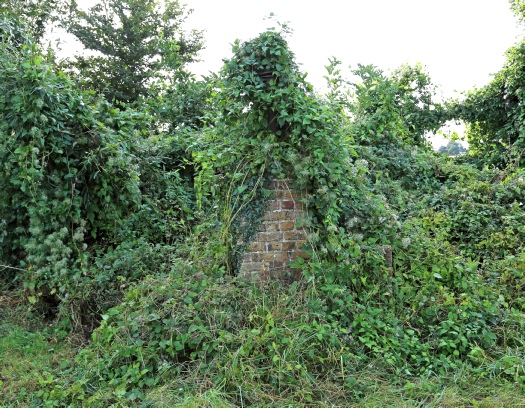This article was inspired by an email query by Peter Griffiths on 12 September 2016 following the posting of some photographs on our Plus Website which were donated by Jane Unwin. Peter asked if anyone could help with his query, “It concerns the last photo in the Jane Unwin Collection that Richard has posted on our website, i.e. the second of the aerial shots of Little Wakering Hall. Back in the 1940s and 1950s, there was a public footpath diagonally across the wheat-field in the top-left-hand corner. The other end was the lane by Little Wakering church that led to Wick Meadow. Is the footpath still there?”
Peter’s query fired up some of our member detectives and I have listed their email replies, below:
1. Stan Witton replied: “Officially I believe it is, but amazingly my brother-in-law told me last week that Bentall is trying to make people go around the edge of the field. Unfortunately, he went on holiday yesterday, so I will not be able to double check until Saturday!”
2. Dave Lee also replied: “If you Google ‘Footpath Map - Great Wakering Parish Council’, you will see they have generated a schematic diagram of footpaths in their parish. The footpath you are interested in is part shown at the junction of footpaths numbered 10 and 19 on the map. The footpath has not been identified with a number but does show it heading in a diagonal line towards Little Wakering. Recently I have walked along Little Wakering Hall Lane and can confirm that the footpath is still sign posted, but I have not walked this footpath for over 50yrs.”
3. Lisa Machin shared her delightful recollection of Little Wakering Hall: “I can't answer that Peter, but I did want to share my memories of the hall from when I was living in Kimberley Road in the late 1960s. I was at school with the children who lived at the Hall at that time. It was shared by two families, the Ricketts and the Angels (I think Mrs Ricketts and Mrs Angel were sisters? not sure). I could walk to the Hall from our house, along the sea wall and across the field by Wakering Wick. It was an amazing house to play in as a child. I had my first taste of avocado in Mrs Angel's kitchen!”
4.  Mick Prior replied: “I remember the diagonal footpath from the times we used to go over to the “Pughole” to catch newts etc. That was in the mid 1940’s. Mick’s future wife to be, Pam Walton, is pictured at the pump above a well in a field close to the footpath which runs from Little Wakering Hall to Little Wakering Church. The picture is quite small, taken by Mick in the late 50’s prior to their marriage in 1961. Pam made the lovely bright dress that she is wearing, at Art School.
Mick Prior replied: “I remember the diagonal footpath from the times we used to go over to the “Pughole” to catch newts etc. That was in the mid 1940’s. Mick’s future wife to be, Pam Walton, is pictured at the pump above a well in a field close to the footpath which runs from Little Wakering Hall to Little Wakering Church. The picture is quite small, taken by Mick in the late 50’s prior to their marriage in 1961. Pam made the lovely bright dress that she is wearing, at Art School.
The pump was there later on when Pam and I used to walk around the Wick Meadow etc. The footpath is still shown on Google Earth today and so is the old Pump on Wick Meadow.”
The pump can still be seen today and is pictured several paragraphs above. It would be easy to pass by it along the footpath and not notice it since it is covered in ivy.
5. Robin Nicholls replied: “Ah! the Puggy ! I used to walk down what was then ‘Vicarage Lane’ to fish for sticklebacks. Bliss! This was in the 50’s. Often the walk was extended along ‘the diagonal’ to Wick Meadow. I loved those buttercups. We sometimes went for a family walk (Sunday best) down the lane to the puggy and then across to ‘The Shaft’ which was a disused sand pit, another location for adventurous activity. Tony and Geoffrey Webb, Laurie Sutton, David Belton and Joss Wiggins not to forget my sister Lynda, Christine Belton and Anna and Anita Wiggins. We were a happy family group – my grandparents Charles & Lillian Wiggins did well and we enjoyed those summertime walks to the Shaft. Happy days. Does anyone know the derivation of ‘the shaft’?”
6. Laurence Street, our very own trusted local historian, offers the following story about ‘the shaft’: “The shaft area was formerly the Pug Mill (hence Puggy) where the pug (Brick Earth) was washed in a round pit. There were suspended drudges which were driven around firstly by a horse walking around and later by an engine. Once washed the mixture was called Marm and pumped over to Mill Head and then in to the Backs which were behind each shed. It was left to dry through the winter and in the spring a foot layer of screened clinker was spread which fired the ultimate kilns, etc., etc. More on the brick making process if requested. Most of my brothers were employed there as slave labour because that's what it was. Even if you escaped the Marsh Gas.
Back to the shaft. That's exactly what it was, a deep well lined with timber. So constructed because washing pug needed a lot of water so, a shaft was sunk. As the pug digging progressed across the marshes another pug mill was built behind Elm Cottage and another shaft dug opposite the cottage where the bull rushes grew. Sadly, the pug ran out and Millhead closed in 1959 having opened in 1860, nigh on 100 years. The shaft is now Bentall's fishing lakes called Mill Barn after the Pug Mill.
7. Dave Lee directs us to a Barling and Wakering Heritage website article by Laurie Street, titled 'The Lore and Allure of the Ghost of Baker's Grave' (dated April 2012). Laurie gives a plausible explanation of how the 'Shaft' got its name, and why deep shafts were dug to store water which was used in the manufacture of building bricks.
8. Robin Nicholls replied: “There is another related aspect - my grandfather Charles Wiggins engaged on his boatbuilding activities in The Red Shed at Mill Head, significant in our family history. I used to go down there a lot as a teenager – imagining the barges putting in to load bricks (for London?). Happy days. I believe the shed had been ‘the canteen’ for the brickyard. I have not been down to Mill Head for years and wonder if The Red Shed still exists.”
NB.
Bernard Cooper has written an excellent article about the Great Wakering Brickfields and explains in some detail about ‘pugs’ and local brickmaking.
Laurence Street added that he had retired from writing for the group but he couldn't resist this one, saying that there are not many real old ‘uns left now to remember first-hand the Tales of Yesteryear, A Bygone Age.




 Mick Prior replied: “I remember the diagonal footpath from the times we used to go over to the “Pughole” to catch newts etc. That was in the mid 1940’s. Mick’s future wife to be, Pam Walton, is pictured at the pump above a well in a field close to the footpath which runs from Little Wakering Hall to Little Wakering Church. The picture is quite small, taken by Mick in the late 50’s prior to their marriage in 1961. Pam made the lovely bright dress that she is wearing, at Art School.
Mick Prior replied: “I remember the diagonal footpath from the times we used to go over to the “Pughole” to catch newts etc. That was in the mid 1940’s. Mick’s future wife to be, Pam Walton, is pictured at the pump above a well in a field close to the footpath which runs from Little Wakering Hall to Little Wakering Church. The picture is quite small, taken by Mick in the late 50’s prior to their marriage in 1961. Pam made the lovely bright dress that she is wearing, at Art School.